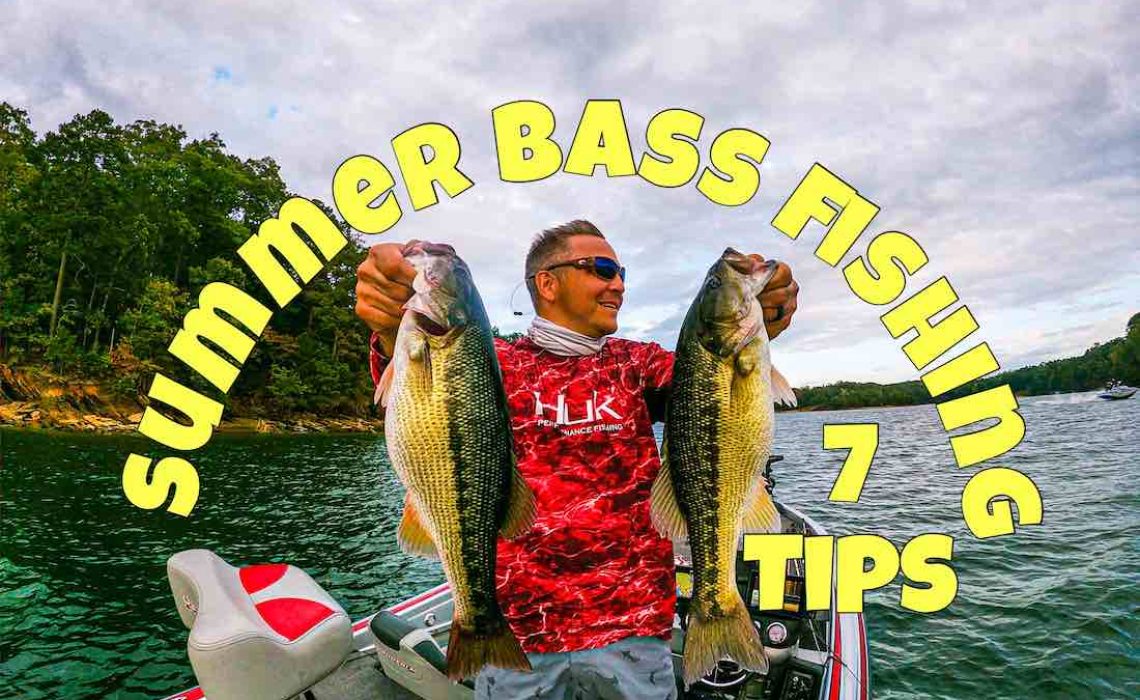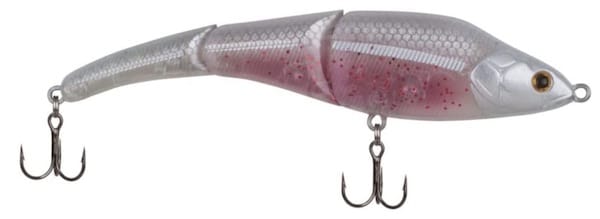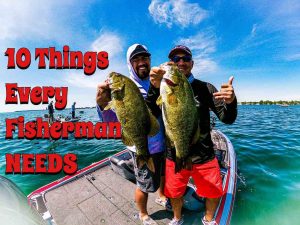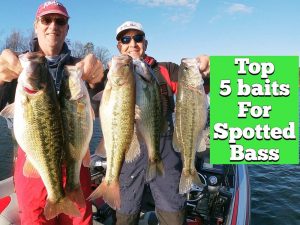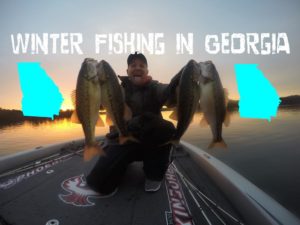Summer Bass fishing can be broken into two different categories. The beginning of summer can be awesome for bass fishing. The fish are more aggressive and feeding to prepare for the hot water temps to come.
Then there are the dog days of summer. The water temps get into the upper 80’s and the fish tend to be less aggressive.
Of course, your tactics will change from lake to lake but a general overview will help you catch more bass.
Fish the Morning
The old saying, “the early bird gets the worm” still holds. The low light conditions help fish to feed more aggressively. If you want to chuck out topwater this is the time to do it. They will be much more likely to commit to it with the low light conditions.
I particularly love the Livingston Lures Walking Boss because it also makes baitfish noises as you are walking it across the top. I feel this gives me an advantage and I have seen it outperform other topwater baits.
Check out the Livingston action in this video. This was early summer and I saw some fish schooling. I threw my Livingston out in another direction and set the rod down. I picked up a swimbait to fire it into the schooling fish. While the Livingston was sitting still it got nailed and I almost lost my rod. Check it out.
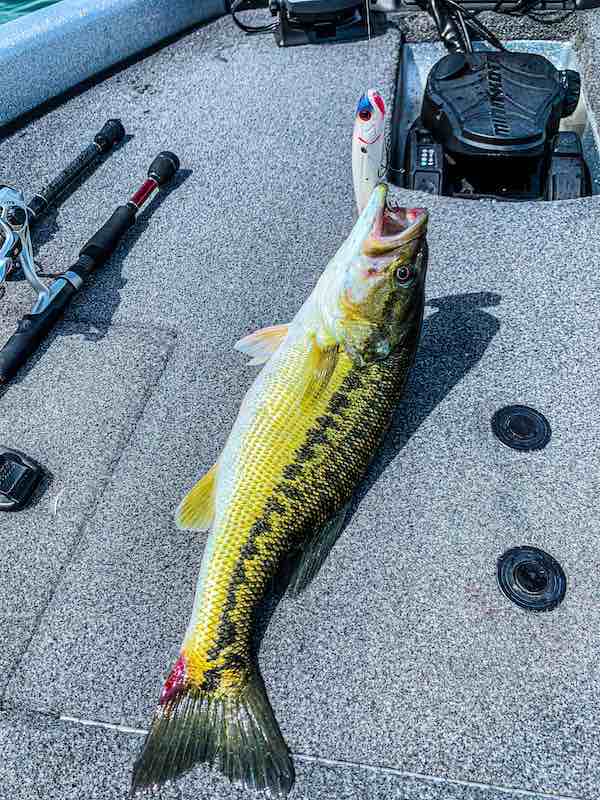
Work Top to Bottom
My summer approach is very simple really. I start off (especially early summer) working the top. If I do not have success there I go subsurface. Some type of swim bait works well for this. I personally love trying the Sebile Magic Swimmer.
If that doesn’t work I will go a little deeper with a spy bait. A spy bait is great for catching those suspended bass. If you want to learn more about this tactic check out this article on how to use the Spy Bait.
After that, I like to throw a crankbait down deep. If I am targeting a ledge I want to make sure the bait is hitting the bottom. If I am targeting a brush pile I want to make sure my lure is getting down to the brush pile.
My crankbait of choice depending on the depth is going to be a Rapala DT.

And last but not least if they won’t bite anything from above it is time to finesse fish. Maybe a Texas rig, Carolina rig, or a shaky head worm.
Find the Bait and Match It
During this time of the year, the fish will target baitfish. It is more vital now more than ever to match the size of the baitfish.
I usually start bigger and downsize if need be. If I see the baitfish in the fish’s mouth or dead in the water I will grab it and try and match the color and size as close as I can.
If the bait is very small it may be best to downsize to a jig head and some type of soft paddle tail swimbait like a keitech.
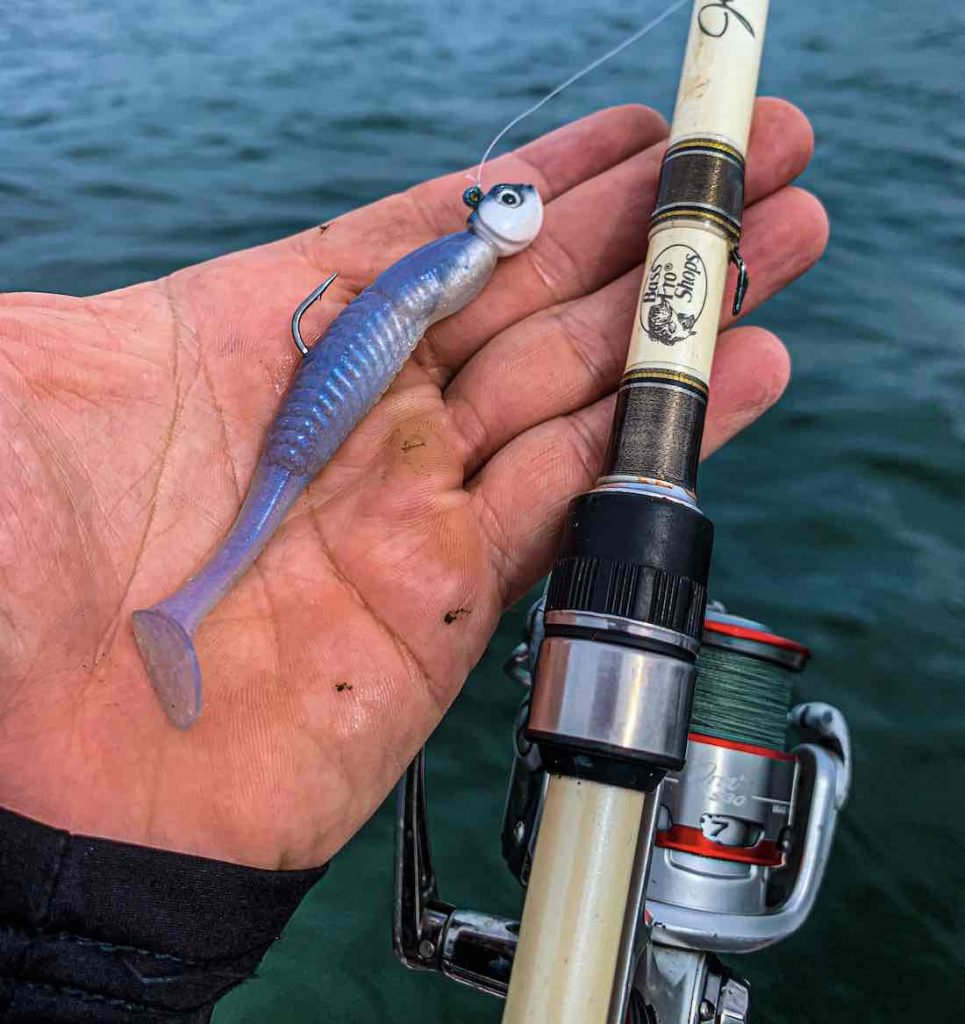
With the soft swimbait, I usually like to let it sink to the bottom and reel it in very slow. I like to keep bottom contact so I can bring it through the brush pile or keep it down on the ledge.
Find the Fish before you make a Cast
It is important to realize that bass group up in big schools in the summer. Finding fish first is important. Do not just go out and fish your favorite spots. Use your electronics to find them before making a cast.
Finding them is only half the battle. Making them bite can be hard. However, when you find the right presentation you can load the boat up.
Making them BITE
Ok so now you have found the fish. But you are making casts after the cast and can’t get them to bite. Sometimes all you have to do is get that first fish to bite and it will fire up the school.
Using what we learned above and working top to bottom is a good place to start. You have to listen to the fish and let them tell you what they want.
Let’s say that you are fishing the bottom with a texas rigged 10inch worm and you get a bite. You set the hook and you do not hook up. Maybe it happens again and you get the same result. This would be the time to change to something smaller and try again. I have personally done this and been successful.
Sometimes these bass need to be triggered into biting. Maybe you throw a white hair jig on a ledge for some of those big Lake Chickamauga bass. You work it slow and get no bites. Try throwing it out and popping it up off the bottom hard and letting it sink. Or reveling it fast along the bottom and stopping it suddenly. You are trying to get these fish to react.
Once you hook up you want to make sure you keep the boat in the same position. You also want to get that fish in and get your lure back into the school as fast as possible.
Catching that first fish will put the bass into a frenzy and you want to capitalize on that.
Understanding the species you are targeting
The three major species of Bass are Largemouth, Smallmouth, and Spotted Bass and they all have different personalities and habits in the summer. Understanding the species is important.
Largemouth Bass
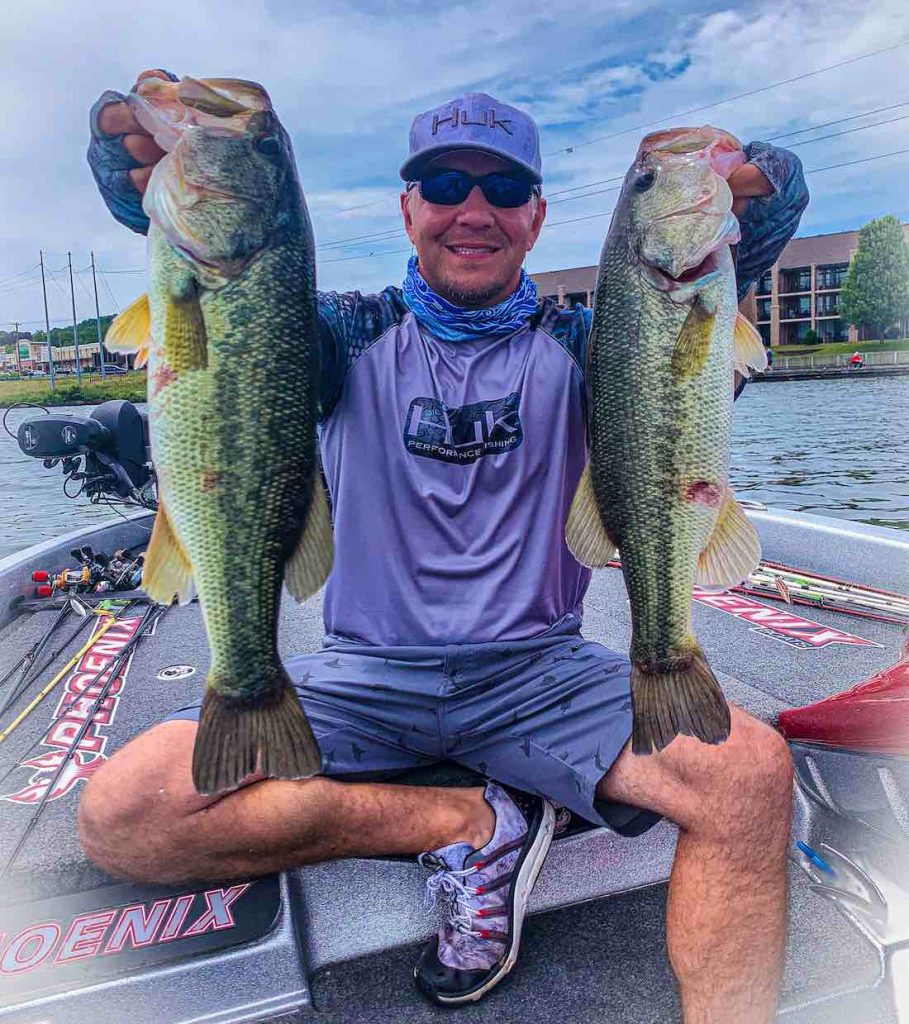
Largemouth bass are the most stubborn of all three mentioned above. But when you find them feeding and reacting to your presentation you can catch some absolute giants.
Current will help these largemouth feed. You may get very little to no success until the body of water you are on starts running current.
You can usually find this out by calling the US corps on engineers for your lake. You may be better served to target dock fish until your lake is running current. When that happens you can go offshore and look for those massive schools of largemouth.
Largemouth will not move quite as much as the other two species. They are just a little harder to entice. Lures like jigs, swimbaits, Texas rigged worms, Carolina rigs and deep-diving crankbaits are all great places to start for those big largemouth.
Smallmouth Bass
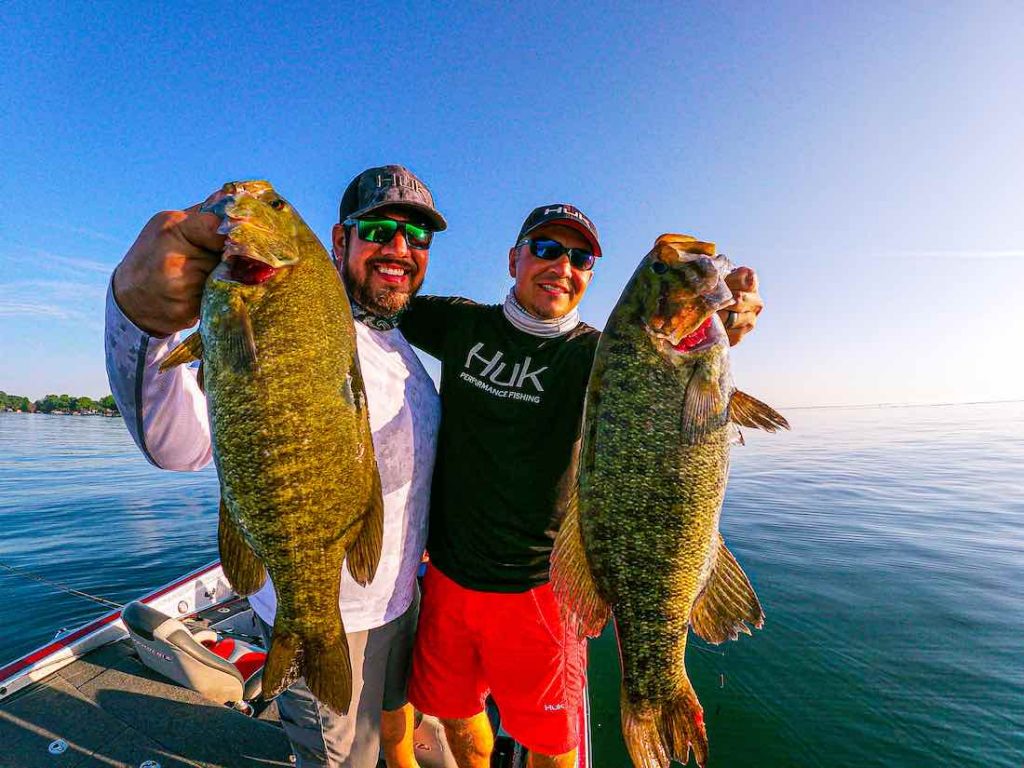
Smallmouth Bass are always on the move. Two Go to lures for smallmouth are a drop shot and a crankbait.
You can find some mega schools also this time of year. But, just because they are there one day that doesn’t mean they will be there the next. They probably won’t.
So you will just have to search nearby and within 100 yards sometimes and you will probably locate them again.
Smallmouth are the most aggressive of the three species so once you find them you will most likely catch them.
You want to find places that have the fish and bait and the bass will be ready to feed.
Spotted Bass
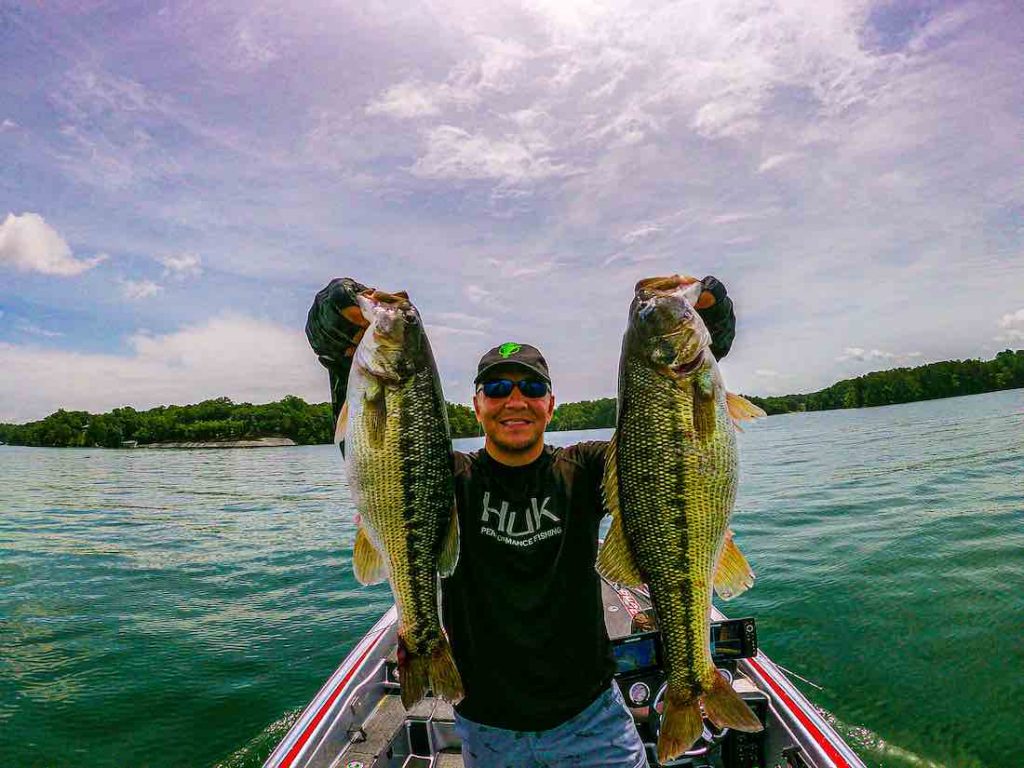
Spotted Bass love the brush piles in the summer. That is almost where they are found exclusively. Finding those offshore brush piles is key.
Early summer they will bite all day a lot of times. Topwater and swimbaits will be your weapons.
Late summer you may have to pull out the dreaded drop shot and a summer time staple the morning dawn worm.

That worm is also great for smallmouth and largemouth.
Spotted bass feed better when the current is being pulled also.
One tactic I like to employ when fishing for spotted bass is to let a spot rest after I have caught some fish off of it. So once the bite dies down I will leave and come back maybe in an hour and catch some more.
Run and gun is the name of the game for spotted bass. It only takes a couple of accurate casts over the brush piles to see if they are there. After that follow up with a vertical presentation over the brush pile with a drop shot and then move on.
Bridge the Gap
Bridges offer two things that summer bass love (especially largemouth). Number one is shade. Smaller bass are more tolerant of the hot water temps then the big bass are. In summer you have to be prepared to catch a lot of small bass before you get those big bites.
Number two is it offers a little more current. The water has to push through a tight area which washes bait through as well.
The big bass will feed on baitfish that are getting funneled through. They will also be feeding on the crawfish that hang out in the rocks by the bridges as well.
When I fish lake Guntersville and cannot find success out deep I always try and target some bridges with a crankbait or football head jig. Any color will work as long as it is black and blue. 🙂
In Conclusion
Summer can be an awesome time to fish and catch a lot of numbers. You will have to do a little more searching around. The payoff can be huge when you find the right bait and school of fish.
Like us on Facebook, follow us on Instagram and Subscribe to the newsletter or enter your name and e-mail to get our free pdf for 10 Tips when bass fishing is tough.

